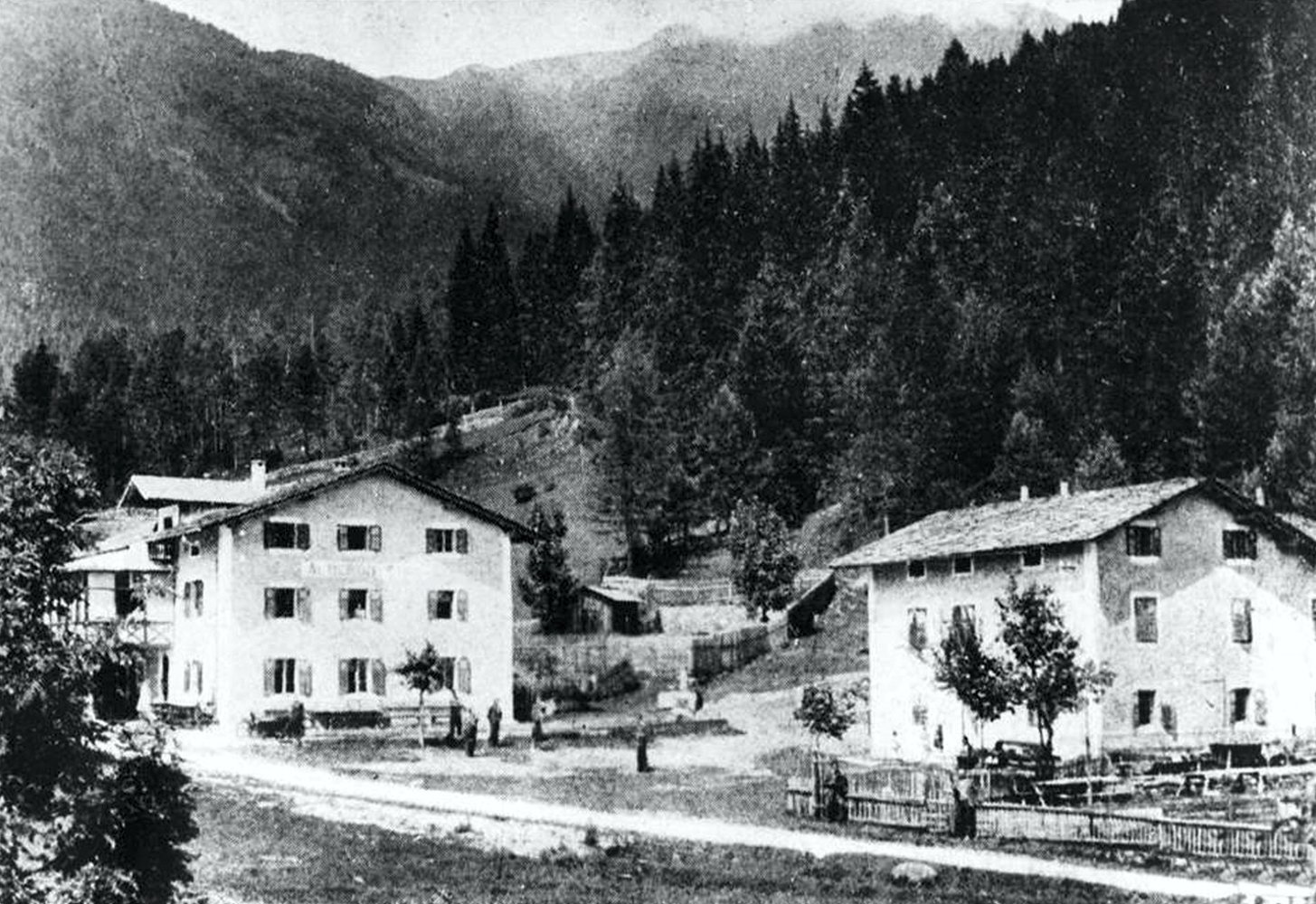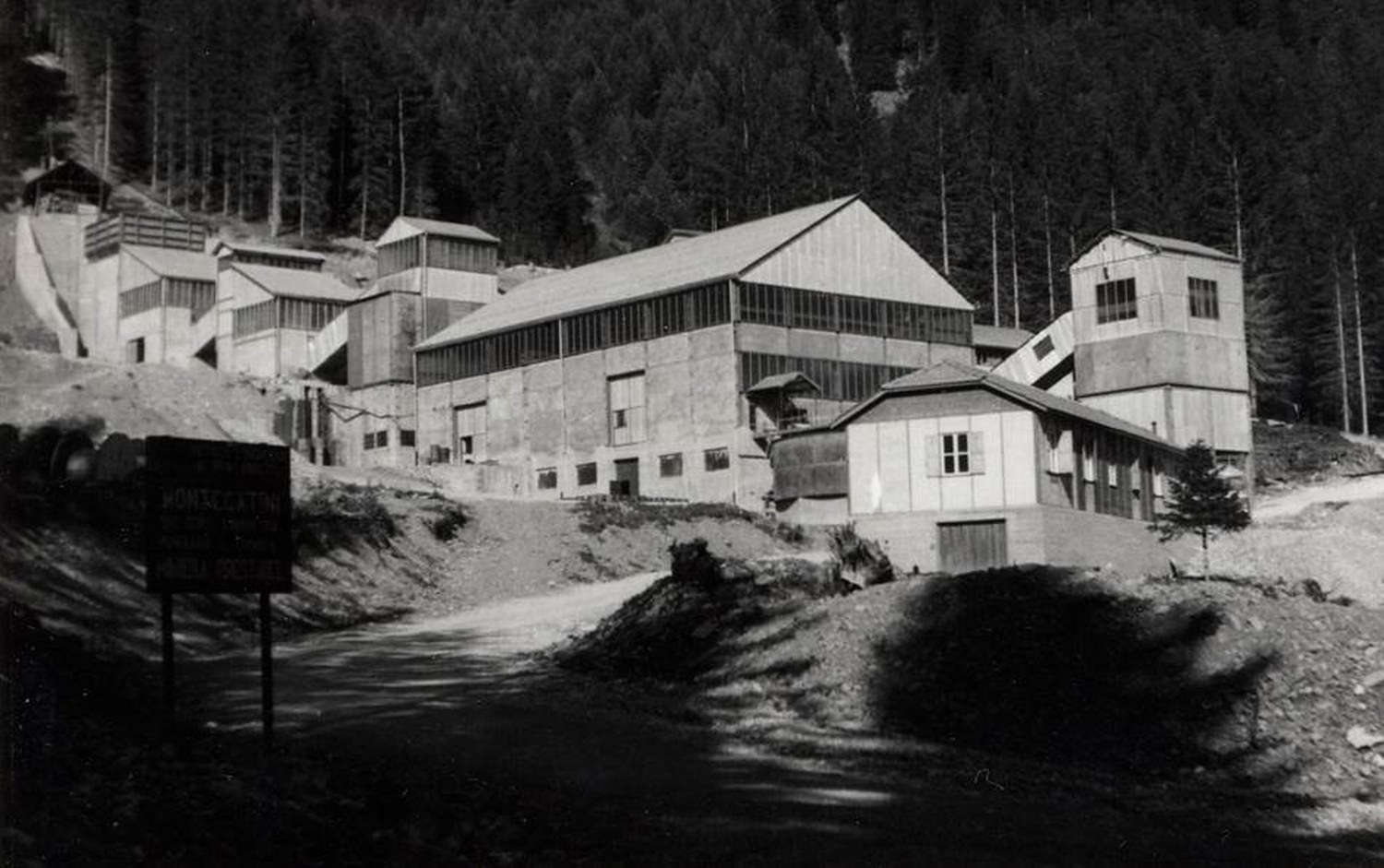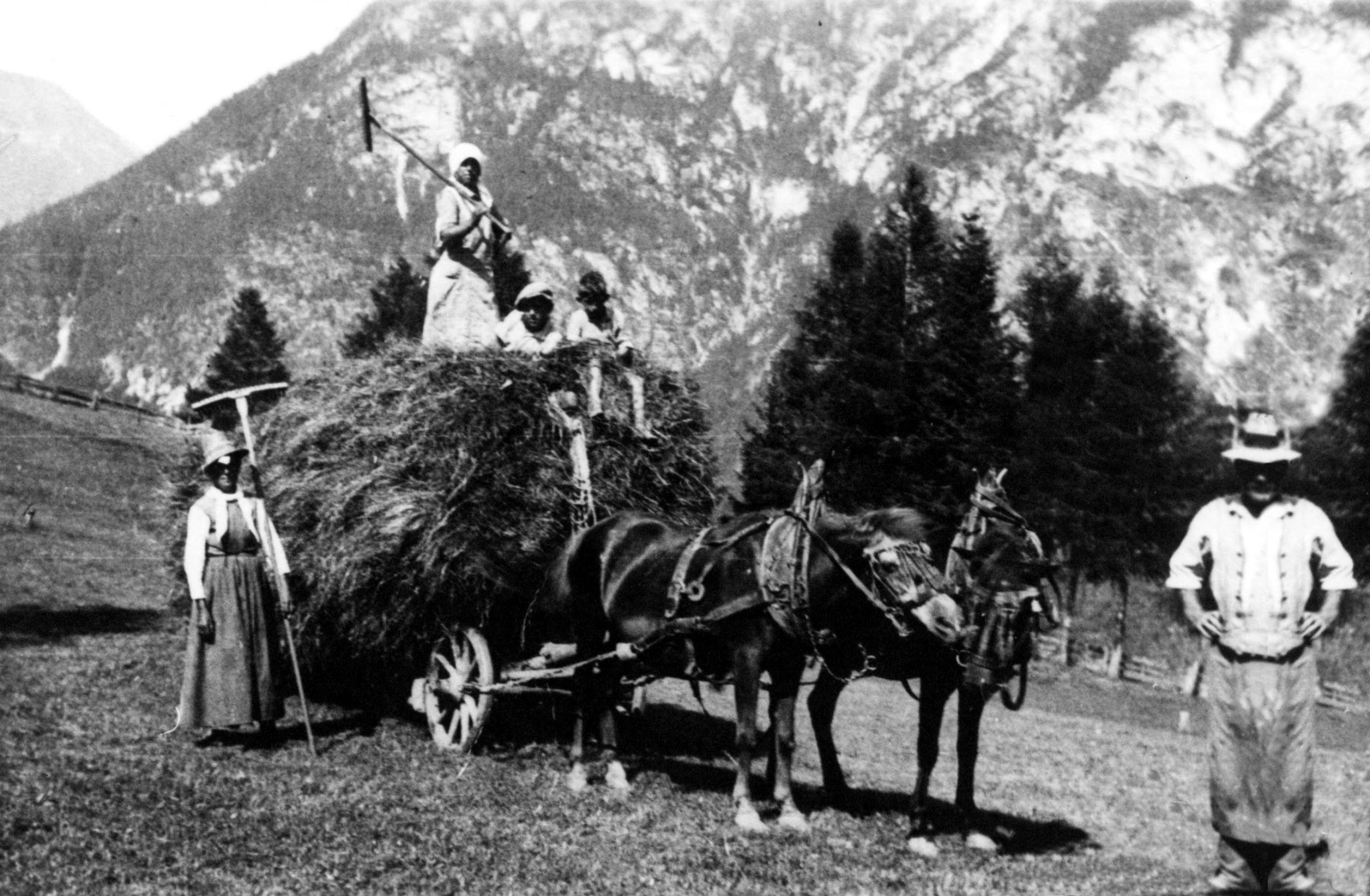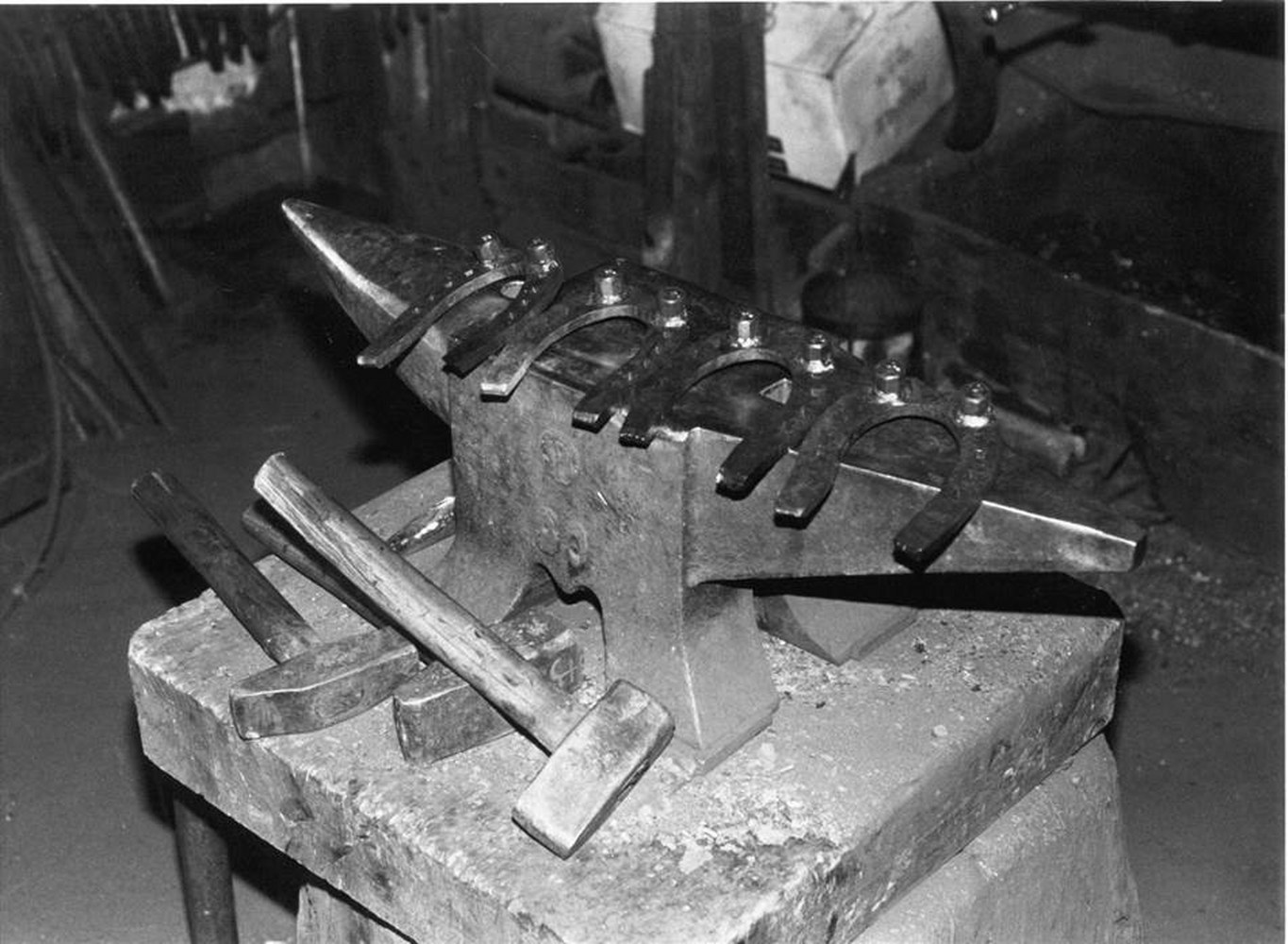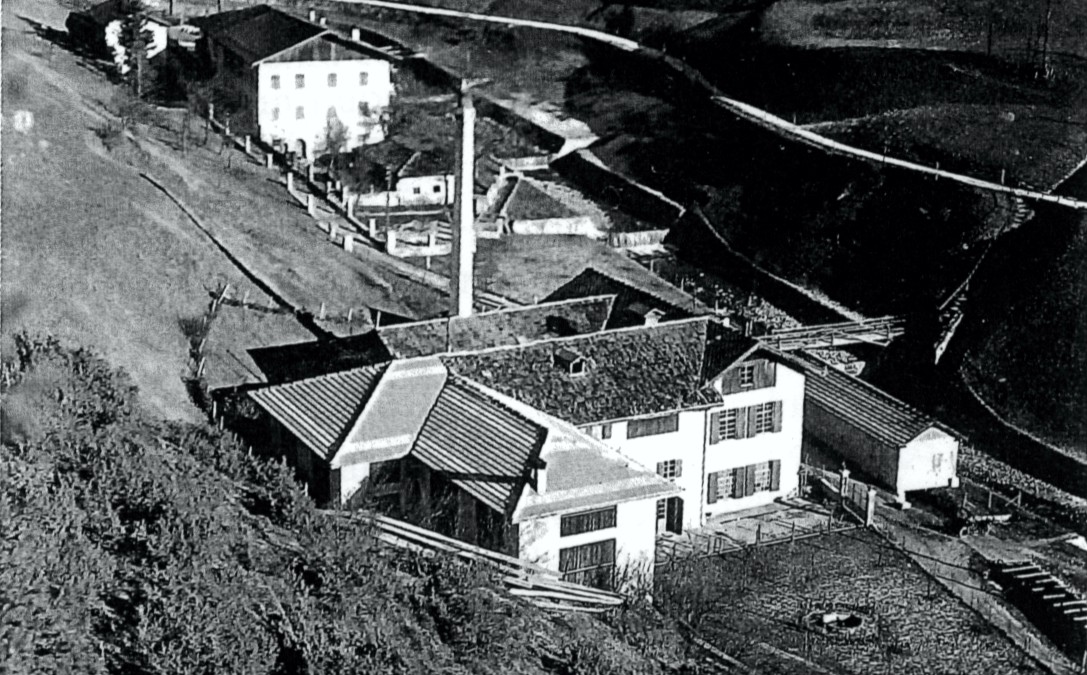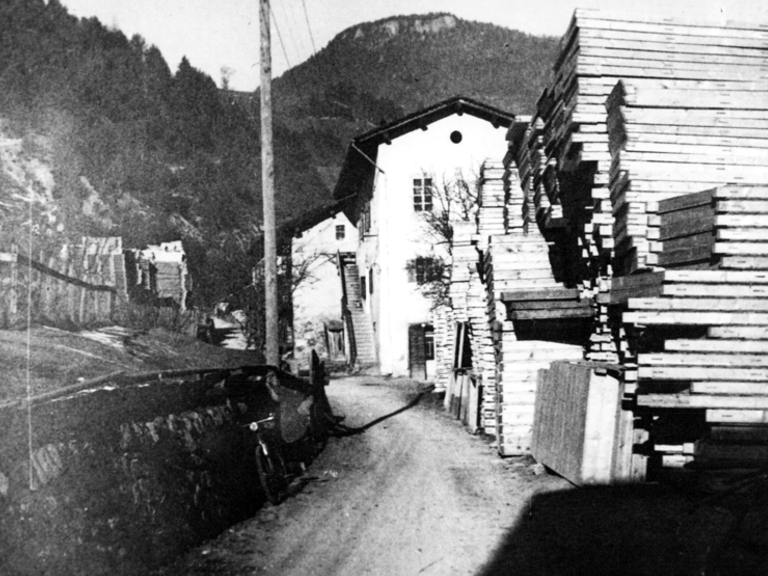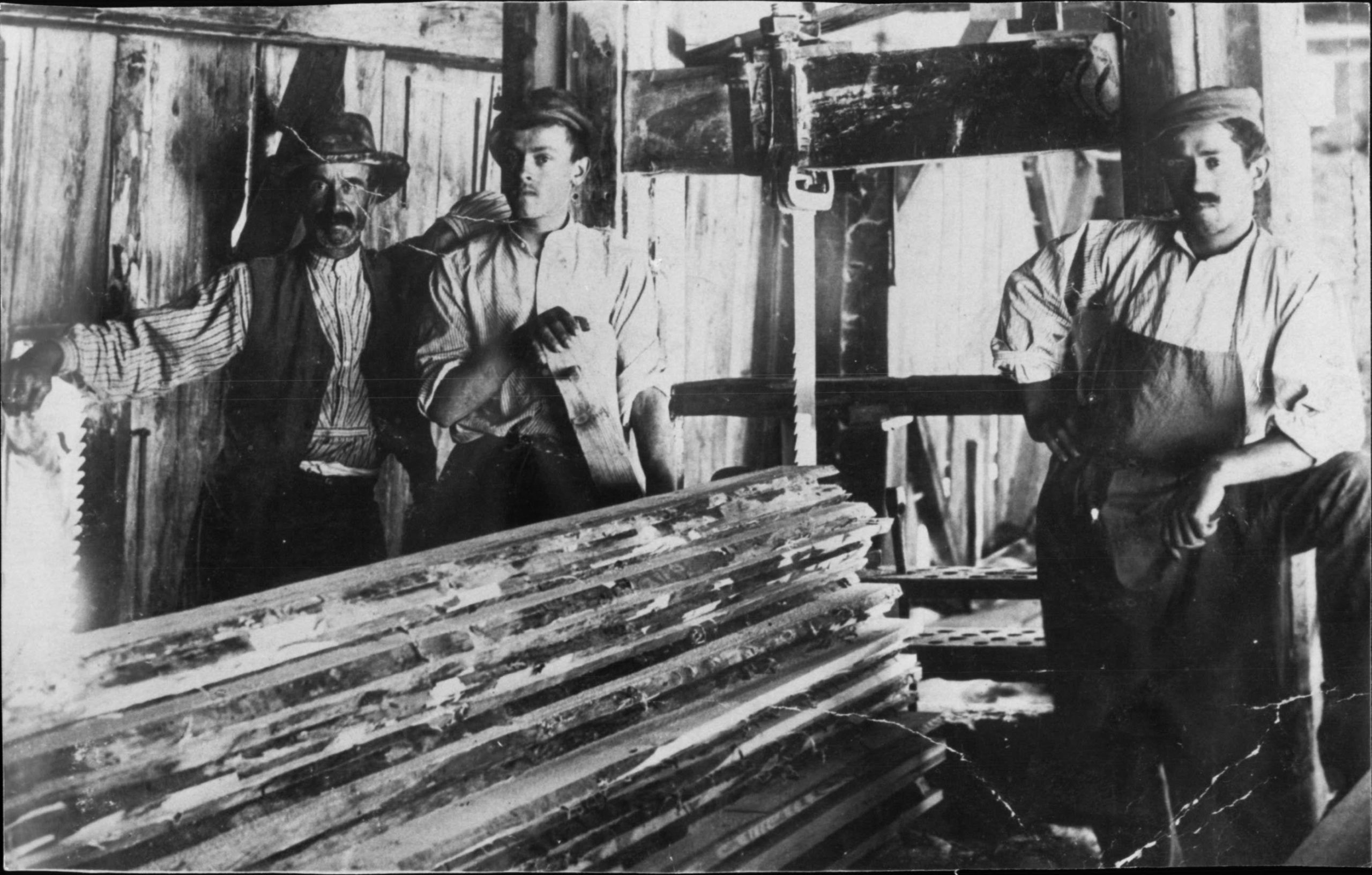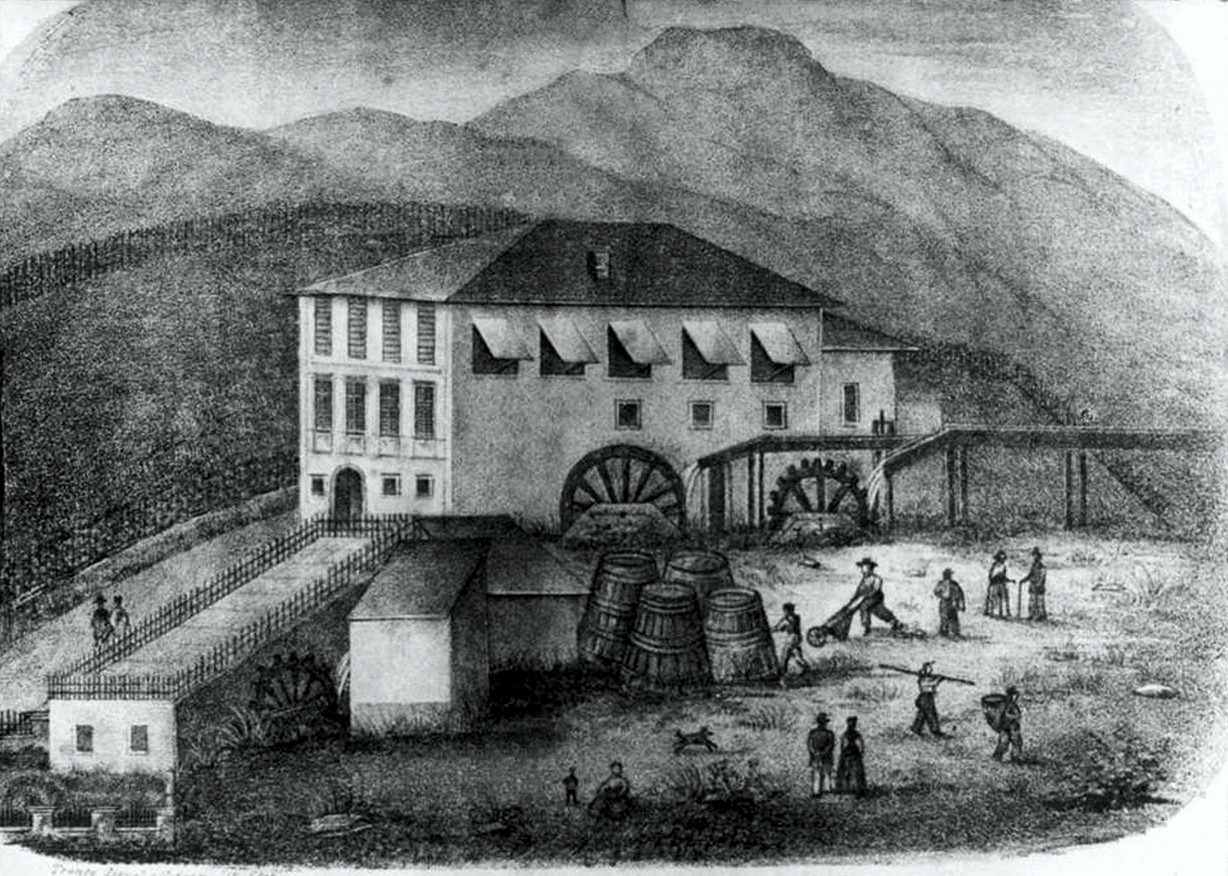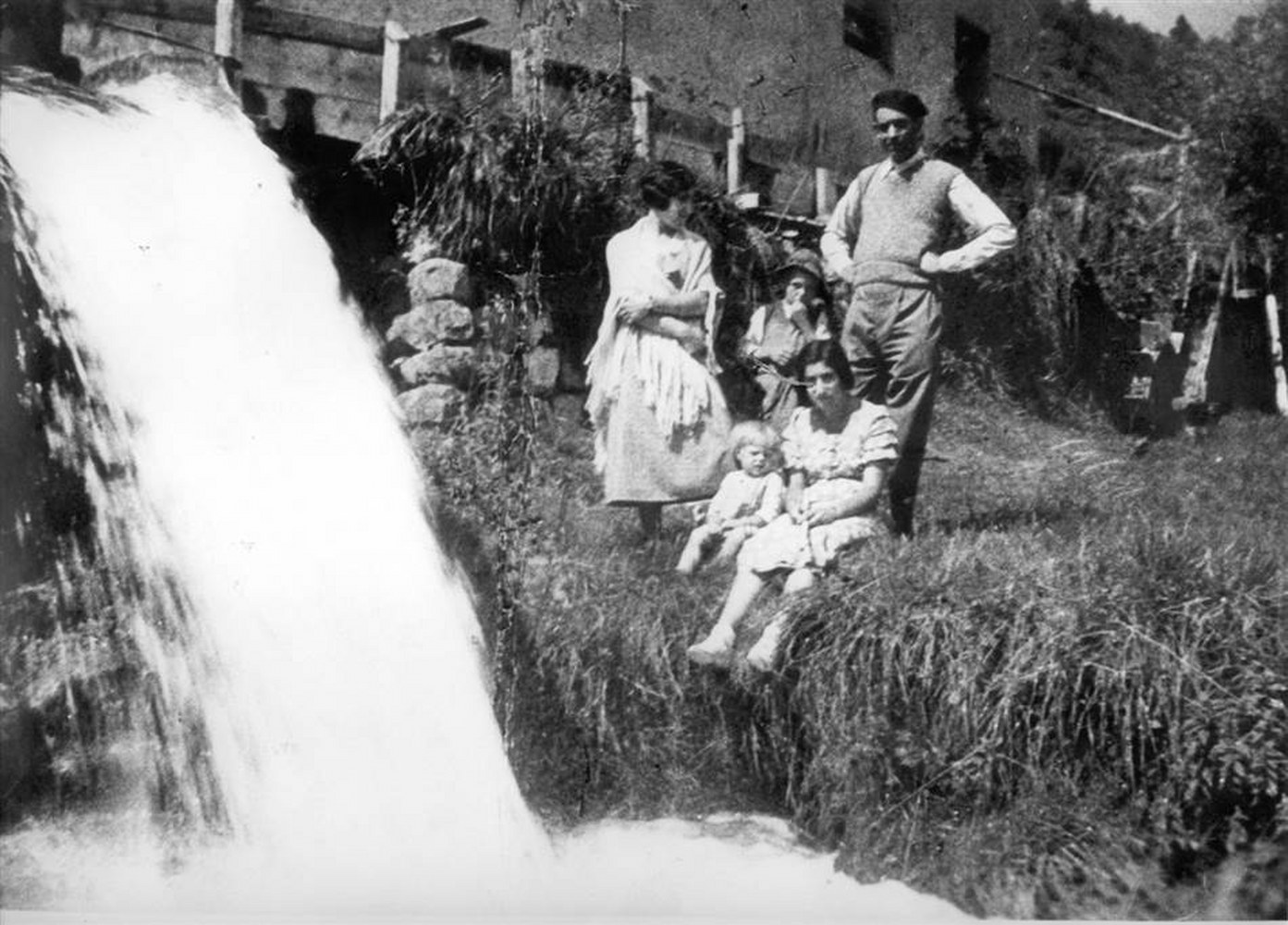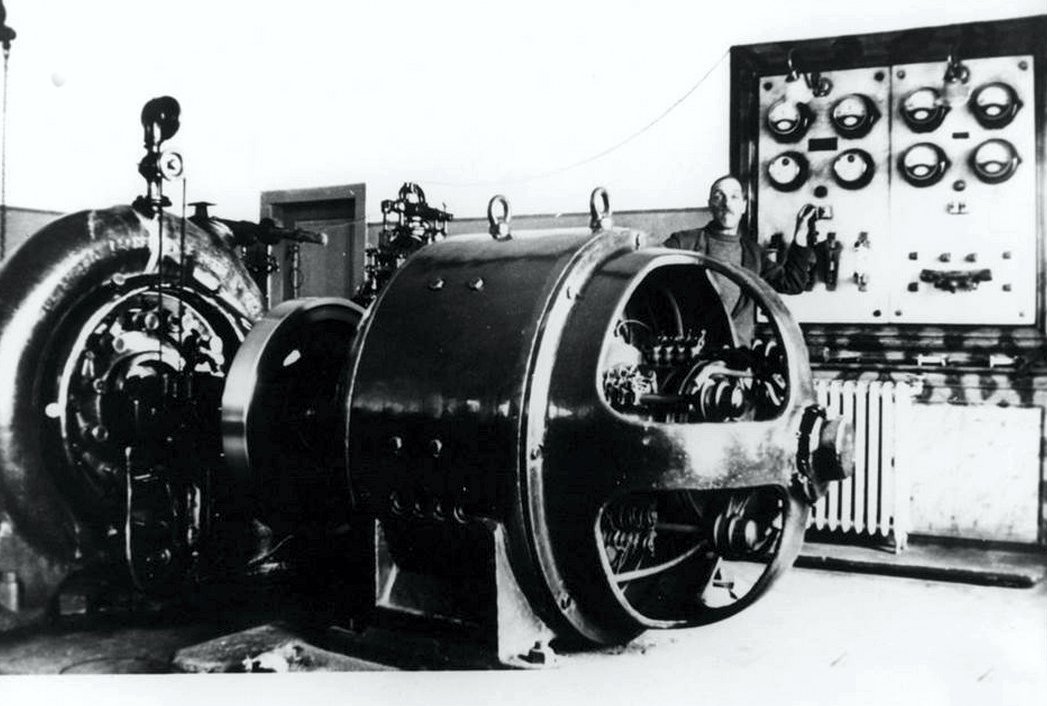The hotels
[vc_row][vc_column][vc_column_text]The real development of the Stava Valley for tourism began in the 1950s. Before that, the buildings available for tourists were very modest: only a few small hotels, inns and holiday homes for the summer. The oldest hotel, the “Albergo Stava”, was documented in 1896 and was classified as an inn. At the beginning of the 1900s, it took the name “Albergo Alpino” and during the First World War had to change its name to “Gasthof Stave”. In 1985, there were five hotels on the Via dei Mulini in Tesero and in Stava: Dolomiti, Rio Stava, Erica, Miramonti and, of

